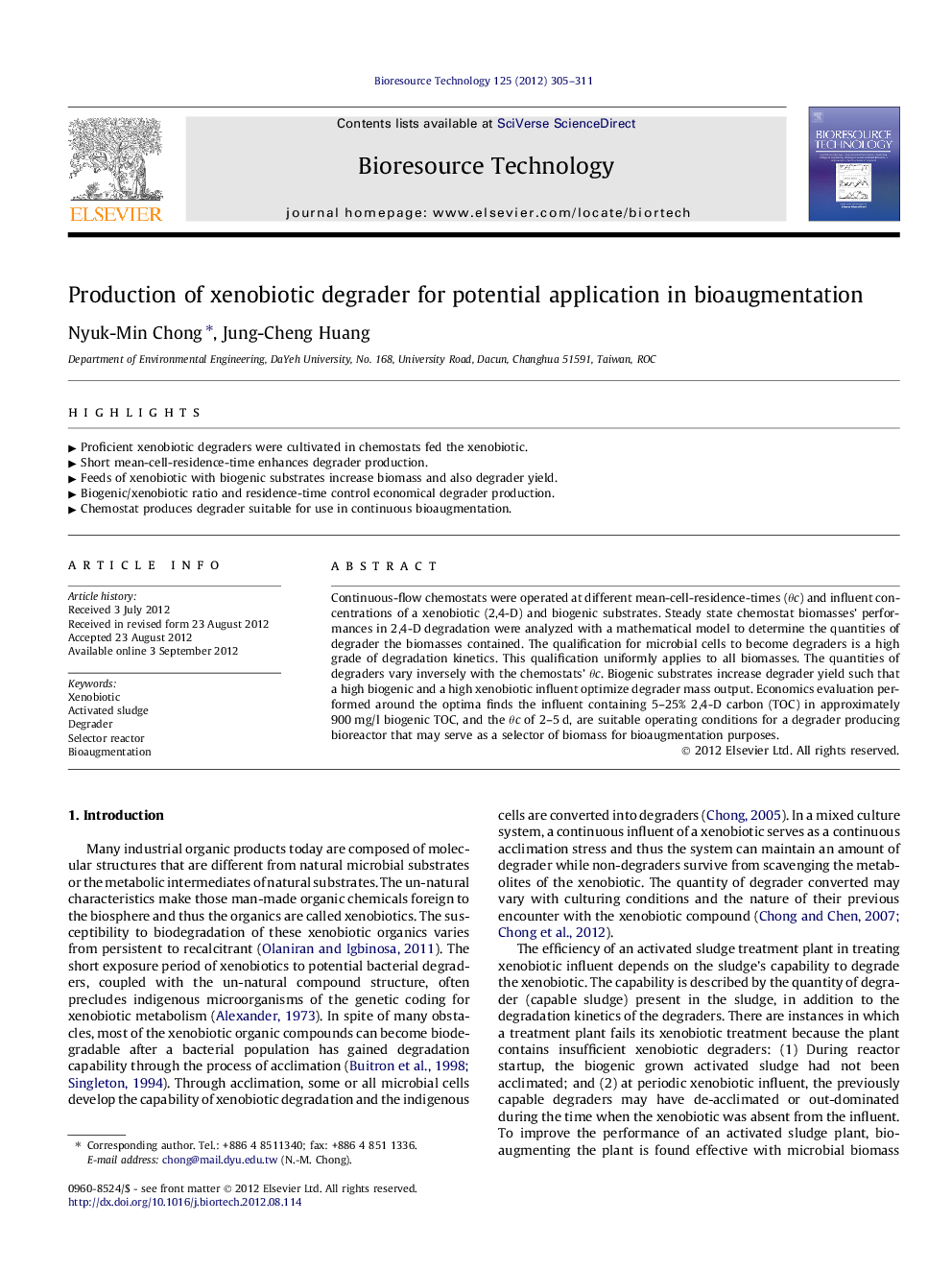| کد مقاله | کد نشریه | سال انتشار | مقاله انگلیسی | نسخه تمام متن |
|---|---|---|---|---|
| 681341 | 1460018 | 2012 | 7 صفحه PDF | دانلود رایگان |

Continuous-flow chemostats were operated at different mean-cell-residence-times (θc) and influent concentrations of a xenobiotic (2,4-D) and biogenic substrates. Steady state chemostat biomasses’ performances in 2,4-D degradation were analyzed with a mathematical model to determine the quantities of degrader the biomasses contained. The qualification for microbial cells to become degraders is a high grade of degradation kinetics. This qualification uniformly applies to all biomasses. The quantities of degraders vary inversely with the chemostats’ θc. Biogenic substrates increase degrader yield such that a high biogenic and a high xenobiotic influent optimize degrader mass output. Economics evaluation performed around the optima finds the influent containing 5–25% 2,4-D carbon (TOC) in approximately 900 mg/l biogenic TOC, and the θc of 2–5 d, are suitable operating conditions for a degrader producing bioreactor that may serve as a selector of biomass for bioaugmentation purposes.
► Proficient xenobiotic degraders were cultivated in chemostats fed the xenobiotic.
► Short mean-cell-residence-time enhances degrader production.
► Feeds of xenobiotic with biogenic substrates increase biomass and also degrader yield.
► Biogenic/xenobiotic ratio and residence-time control economical degrader production.
► Chemostat produces degrader suitable for use in continuous bioaugmentation.
Journal: Bioresource Technology - Volume 125, December 2012, Pages 305–311